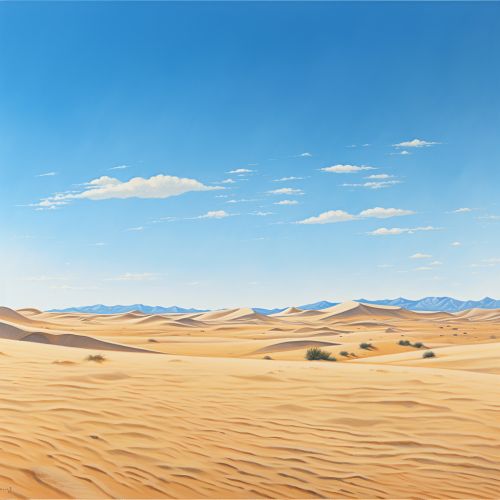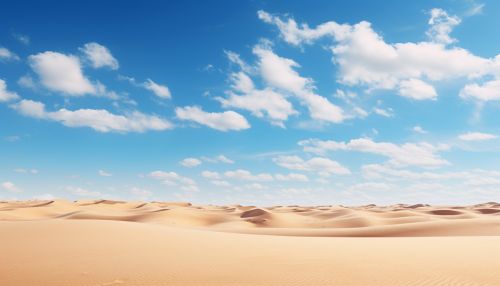Arabian Desert
Geography
The Arabian Desert is the world's fourth largest desert, encompassing most of the Arabian Peninsula. It stretches across nine countries, including Saudi Arabia, Yemen, Iraq, Jordan, Oman, the United Arab Emirates, Kuwait, Qatar, and parts of Israel and the West Bank. The desert is characterized by its harsh, arid conditions, with temperatures often exceeding 50 degrees Celsius in the summer months.


Climate
The Arabian Desert experiences an extreme desert climate, characterized by high temperatures during the day and low temperatures at night. This is due to the lack of humidity and vegetation cover, which allows for rapid heating and cooling. Rainfall is sparse and unpredictable, often less than 100 mm per year. The region also experiences frequent sand and dust storms, which can significantly reduce visibility and create hazardous conditions.
Flora and Fauna
Despite the harsh conditions, a variety of flora and fauna have adapted to survive in the Arabian Desert. Plant species include the date palm, acacia, and various types of grasses and shrubs. Animal species include the Arabian oryx, Arabian camel, and various species of reptiles, birds, and insects. Many of these species have developed unique adaptations to survive in the desert environment, such as the ability to go without water for extended periods, or to burrow underground to escape the heat.
Human Settlement and Culture
Human settlement in the Arabian Desert dates back thousands of years, with evidence of nomadic tribes and ancient civilizations such as the Nabateans. Today, the desert is home to many Bedouin tribes, who have maintained their traditional nomadic lifestyle, herding camels and goats. The desert also contains many significant cultural and historical sites, including the city of Petra in Jordan, and numerous ancient rock art sites.
Economic Importance
The Arabian Desert is of significant economic importance due to its vast reserves of oil and natural gas. The region is home to some of the largest oil fields in the world, including the Ghawar Field in Saudi Arabia. The extraction and export of these resources has transformed the economies of many countries in the region, leading to rapid urbanization and development.
Environmental Issues
The Arabian Desert faces a number of environmental issues, including desertification, water scarcity, and the impact of oil extraction. Desertification is a particular concern, with overgrazing, deforestation, and climate change contributing to the expansion of desert areas. Water scarcity is also a major issue, with many areas reliant on non-renewable groundwater resources.
